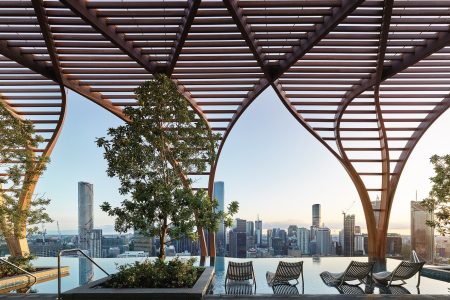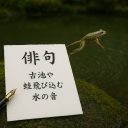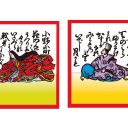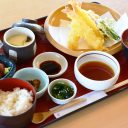
The annual JAPAN EXPO, previously run at Sydney Town Hall, was held online for the first time in September 2024. Bringing together rich classical and contemporary Japanese culture, the event boasted over twenty workshops and programs. The four mainstage events were a Kenbu demonstration, Cominca presentation, Noh workshop, and a hidden-gem-journey, hosted by popular Youtuber @Ryotarosjapan.
(Translated from Japanese by Sachi Kobayashi)
Using an interactive virtual event service, the expo presented an immersive experience where you could experience exploring main stage and booth-led events at your discretion. Unlike most online events which broadcast a singular program on a fixed screen, the innovative EventX promotes a user experience that imitates the real thing, providing a uniquely engaging online adventure. You could shop Japanese food and products at exhibition booths, and learn about cultural history through workshops, all the while asking questions and engaging in discussions with exhibitors in between main stage events. By hosting the event online, the event was accessible to a diverse audience, each eager to learn more about Japan.

1. Kenbu Demonstation
The main stage program began with a demonstration, where participants were introduced to the art of Kenbu.
Performed to Ginei, the rhythmic recital of traditional Japanese poetry, aided by a katana, a Japanese sword, the characters for “Kenbu” literally translate to sword-dance. Although the tradition of dancing with swords extends even further into Japanese history, modern Kenbu as we know it is a type of interpretive dance that is thought to have begun in the Meiji Restoration (1874). Incorporating the spirit of the samurai as they centre themselves and mentally prepare for what lays ahead, the practice of Kenbu also has a storytelling aspect, as they express the trials and tribulations woven throughout poetry written by samurais.
The traditional performance at the expo was captivating; as the sword sliced through the screen, one felt transported through time. The precise and deliberate movements of the dancer, Ryuo Arai, displayed immense control over the weight of the katana, and made doing so seem instinctual. In the second half of the program, the meaning of the choreography was explained, and the kimono and hakama were shown being put on, providing a lot of insight into the artform. Many questions were asked during the Q&A session afterwards.
2. Cominca Presentation
The second event on the mainstage was a presentation on “cominca,” traditional Japanese houses that were built at least fifty years ago, although it is not uncommon for some houses to be over 100 years old. Characterised by thatched roofs, open interiors and wooden post-and-beam construction methods, cominca, or “kominka,” were designed to harmonise with their natural surroundings, using locally sourced materials and construction and repair techniques passed down through generations.
In recent years, many cominca homes have been abandoned or demolished due to growing urbanisation, and as a result the rich cultural heritage of traditional Japanese architecture has been threatened. In their presentation, the Cominca Project introduced the beauty and potential of restoring cominca, conveying the cultural importance of preserving their features and the joys that can be experienced in staying in an old house. A video showing the lush scenery of Satoyama Shobara, a fully rentable cominca in the Setouchi region, was also provided, revealing the charms of a luxury stay in a traditional home.
3. Noh Workshop
Noh is a major form of classical Japanese dance-drama performance that has taken place since the 14th century. Based on tales from traditional literature and Japanese folklore, Noh often follows the narration of a supernatural being who has been transformed into human form. Integrating a colourful assortment of masks, costumes, and various props into performance, Noh contains a rich tapestry of Japanese culture within each aspect of its performance.
During the workshop, Noh actor Umewaka Motonori explained the meanings of decorations depicted on the Noh stage. The meaning of the pine, bamboo, and plum trees depicted on the Nishinomiya Noh theatre were explained, which even many Japanese people may not know. By learning about the background of this practice, viewers can appreciate Noh on a deeper level.
4. Hidden-Gem-Journey by @Ryotarosjapan
The final mainstage event was a conversation about Japan’s hidden gems, hosted by @Ryotarosjapan, a popular YouTuber and producer of the channel “Abroad in Japan”. With over 3.07 million subscribers, his videos explore Japan’s lesser-known destinations, providing a fresh perspective on Japanese travel beyond the typical tourist trail.
During the expo, @Ryotarosjapan shared some of his favourite hidden spots in Japan, as well as insights into expectations and experiences of travellers on their first visits to Japan. He also shared information about unique experiences such as “Be Samurai,” where you can wear samurai armour while filming a movie, and “Mt. Iwafune Explosion Experience,” where you can experience an explosion scene from a special effects drama. As an added bonus of the expo being held online, both tours were available to be immediately booked through a reservation link at Mr Ryotaro’s exhibition booth.
The JAPAN EXPO event was a fascinating journey through Japan’s food, products, cultural history, and tourism experiences. The entire event lasted ran for about five hours, and the opportunity to virtually wander around the booths meant that there were endless exhibitions to explore.
High quality Japanese local goods that are difficult to find in Australia, such as umeboshi (pickled plums) from Wakayama, scissors made specifically for fine-art paper cutting, and high-grade matcha were available to be purchased directly from vendors. Participants were issued discounts and coupon codes, so many great deals were found at JAPAN EXPO.
J Culture Sydney plans to hold further webinars as well as on-site events in Sydney, such as a Noh and Didgeridoo Collaboration (November 16th, 2024), a Kenbu Performance (December 13th, 2024), and a Seiya Kamei Piano Recital (December 14th, 2024), so keep your eyes peeled for the future. We hope that these opportunities will help more Australians discover the charms of Japan.
5. Booths for Japanese products and services
In the “JAPAN EXPO ONLINE” events, there are about 20 booths where participants can browse Japanese products and services and interact with exhibitors. Participants interested in Japanese products or services can directly engage with exhibitors at the booths to learn more details. Well-known figures such as Hina Aoyama, who has been making news domestically and internationally, and popular YouTuber Ryutaro’s Japan are also exhibiting, adding to the excitement. Don’t miss this opportunity!


Noh & Didgeridoo Collaboration
“Hagoromo” in Sydney, Australia
Saturday, November 16th, 7pm-9pm
Scutos Church Sydney (44 Margaret St., Sydney)
Gingei, Kenbu, Poetry Performance
Friday, December 13th, 7pm-9pm
Scots Church Sydney (44 Margaret St., Sydney)
Seiya Kamei Piano Recital
Saturday, December 14th, 7:30pm-9:30pm
Sydney Town Hall (483 George St., Sydney)
- For more details on events, please see the following URL ( https://www.japanexpo.com.au/ )
JAPAN EXPO Webinar
Dates: October and November 2024, January 2025
Email: info@japanexpo.com.au
Web: www.japanexpo.com.au/
JAPAN EXPO Venue Event
Date & Time: Saturday, December 14th, 10am-4pm (Sydney time)
Email: info@japanexpo.com.au
Web: https://www.japanexpo.com.au/in-person
Ticket reservations: https://www.eventbrite.com.au/e/japan-expo-2024-tickets
(Organized by J Culture Sydney, Supported by the Consulate-General of Japan in Sydney)












